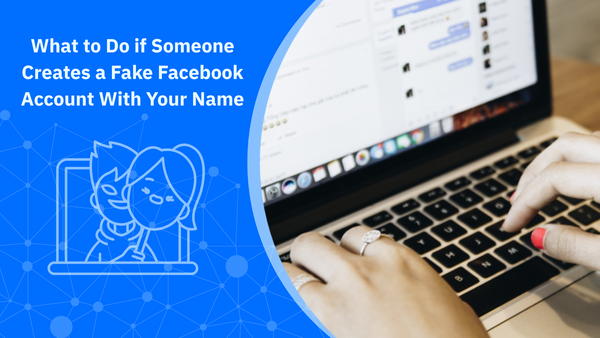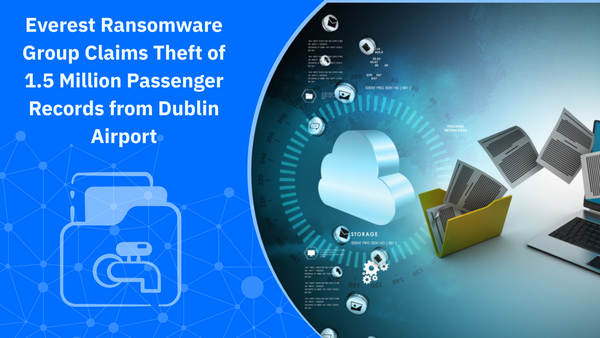Digital Decluttering, Ep 4: How to Find and Delete Forgotten Online Accounts

In today's digital age, it's all too easy to accumulate a trail of old online accounts and profiles that we've long forgotten about. From that Myspace account you made back in high school to the niche forum you signed up for years ago when researching a hobby, these dormant profiles can feel like ghosts of the Internet past haunting you.
They linger somewhere on the Internet and contain a mix of personal data, identity details, and credit card numbers, making you vulnerable to potential breaches, data brokers, or third parties that can access your personal information through these accounts.
To protect your privacy, remove your private data from services you no longer use. You can do this by deleting outdated accounts rather than leaving them dormant. Although it seems a painful process, it's not when you have the right tools to help you.
Why put dormant accounts to sleep forever
Leaving old, unused online accounts littered across the Internet exposes you to potential privacy and security risks down the line. Even accounts you haven't touched in years can become a liability if the company experiences a data breach.
If a service is hacked, your personal information, such as email addresses, passwords, security questions, and identification details, could be exposed on the dark web. Rogue employees could abuse stored payment information or credentials for malicious purposes, such as fraud or spam.
Using the same passwords across multiple accounts compounds the risk - if one gets compromised, attackers can attempt to access your other accounts, too. Even unique passwords don't make you immune, as personal details from old profiles could provide answers to security questions on current accounts.
Outdated recovery emails or secondary addresses linked to old signups represent vulnerability. If bad actors gain access, they could initiate password resets and hijack your active accounts.
By letting dormant accounts linger, you're leaving digital windows unlocked that could enable identity theft, financial crimes, reputational damage, and other serious consequences down the line.
Why risk all these? Delete old accounts and protect your data against breaches and hackers.
How to find your old accounts
When it comes to locating all those old, forgotten online accounts you've accumulated over the years, you have a couple of options. You can attempt to find them manually through some detective work or utilize a specialized service designed to make the process much easier.
If you choose the manual approach, here are some tactics to try:
- Search your inbox for "welcome," "verify," "your account," "free trial," and similar emails that services usually send for onboarding.
- Check your Facebook, Google, or Twitter settings for connected accounts, as many services allow account creation by signing in with these platforms.
Alternatively, you can use Bitdefender Digital Identity Protection to find all accounts made with Google and Outlook with a single click.
Once connected with the email, Bitdefender Digital Identity Protection will provide a full report of any existing accounts and services that may have your personal information. This gives you complete visibility into your digital footprint and highlights any old, unused accounts that could pose potential security risks.
With this level of insight, you can then take action to remove your data from service providers, mitigate risks in the event of data breaches, and be more mindful about minimizing your footprint when signing up for new accounts in the future.
How to delete your old accounts
Now that you've identified one or more old accounts you want to eliminate, the next step is to delete them. This should be straightforward, but websites don't always make it easy.
Here are some tips for finding out how to properly delete an online account:
- Use a search engine to look for the name of the website or service along with "delete account" or "close account."
- Go to the company's support website or pages and look for information on deactivating, deleting, or closing accounts. You may also want to review their privacy policy for details on data retention and account deletion requests.
- If you can't find clear instructions, contact the website's customer support and explain that you wish to permanently delete your account.
- In some situations, you may try to log into an old account only to find that the service has already deleted it due to prolonged inactivity. Or the website itself may no longer exist if the company goes out of business.
Unfortunately, some services do not provide a straightforward way to delete your old accounts. However, if you live in Europe or California, you have legal protections that can compel companies to delete your data upon request: the General Data Protection Regulation (GDPR) and the California Consumer Privacy Act (CCPA).
If you formally request a company delete your data stored with their service, they are legally obligated to comply with these data privacy laws.
Bitdefender Digital Identity Protection can streamline this process. After it scans and detects your accounts across various platforms, it provides pre-written data deletion request templates. With just a click, you can send official requests to companies demanding they purge your personal information from their systems.
Taking advantage of these data protection regulations and tools that help exercise your rights and make companies delete accounts and data you no longer want them to retain.
Can't delete an account? Then, anonymize it!
Sometimes, you may run into websites that don't provide a straightforward option to permanently delete your account. If you're unable to entirely remove the account, there are still steps you can take to protect your private data:
- Sign in and remove any stored financial information like credit card numbers to prevent unauthorized purchases.
- Delete any personal data saved within the app or service, such as notes, tasks, calendar events, etc. Be sure to export/download anything you want to keep first.
- Clear out personal identification details like your name, birthday, address, and other personal info in the account settings.
- Change the email address and any remaining personal details to random, meaningless information.
By purging all identifiable data, you minimize the risks if that account is ever part of a data breach. Attackers won't be able to access much meaningful information.
Be more mindful about your digital life
As you go through this decluttering process, you may be surprised at how many old accounts you have that became incredibly difficult or impossible to remove. This can serve as a lesson for the future: be more selective about new accounts you create.
Before signing up for a new service, consider if it's really worth providing that company with your personal data. The fewer accounts you have floating around, the smaller your digital footprint. A little prudence can go a long way. And so is having a digital identity monitoring service keeping an eye on your data continuously.
Keeping a clean and minimalistic digital footprint requires a lot of deleting, canceling, unsubscribing, and removing to protect personal data. That's why we've upgraded Bitdefender Digital Identity Protection to assist you even better in this process.
Read more about what it can do for you here.
tags
Author
Cristina Popov is a Denmark-based content creator and small business owner who has been writing for Bitdefender since 2017, making cybersecurity feel more human and less overwhelming.
View all postsRight now Top posts
Cybercriminals Use Fake Leonardo DiCaprio Film Torrent to Spread Agent Tesla Malware
December 11, 2025
Genshin Impact Scam Alert: The Most Common Tricks Used Against Players
December 05, 2025
How Kids Get Automatically Added Into WhatsApp Groups with Horrific Imagery Without Consent
November 24, 2025
Scammers Exploit Hype Around Starbucks Bearista Cup to Steal Data and Money, Bitdefender Antispam Lab Warns
November 18, 2025
FOLLOW US ON SOCIAL MEDIA
You might also like
Bookmarks









